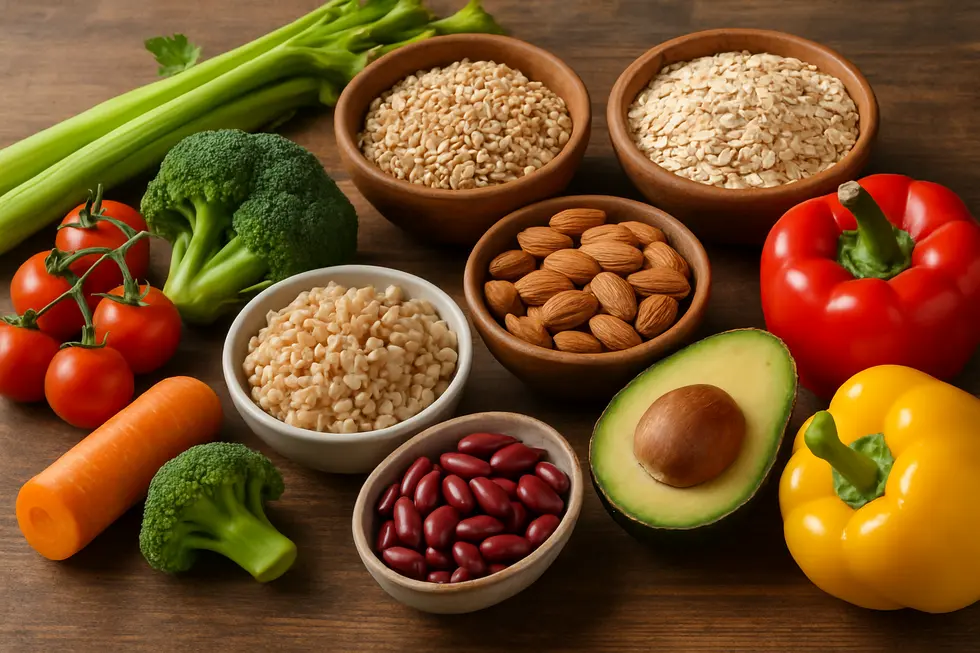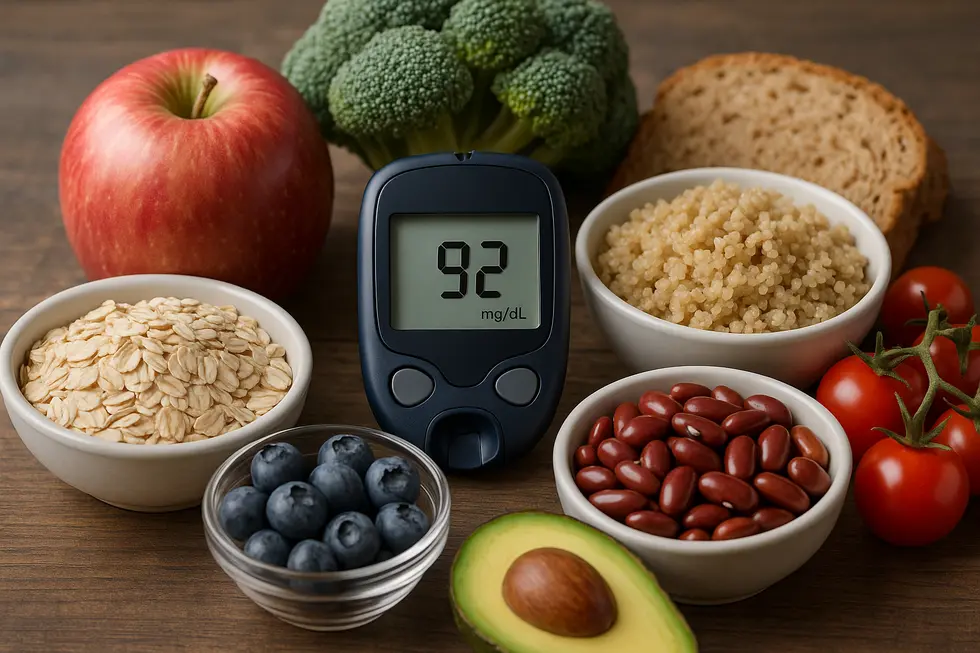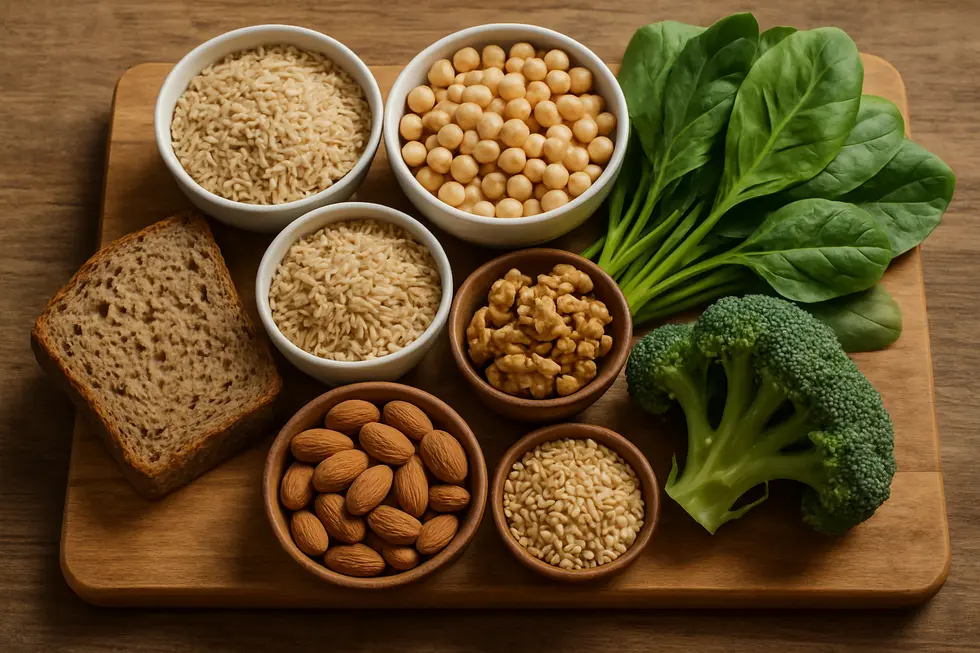Managing blood sugar is vital for diabetics and health enthusiasts. By understanding how low glycemic foods maintain healthy glucose levels, you open the door to a balanced and sustainable diet. This article delves into the nutritional benefits of low glycemic foods, explores their impact on blood sugar levels, and offers practical tips for integrating them into your daily meals.
Harnessing the Nutritional Power of Low Glycemic Foods

In the realm of nutritional science, low glycemic foods play a pivotal role in maintaining balanced blood sugar levels and promoting overall health. Defined as those having a minimal impact on blood sugar, they typically score below 55 on the glycemic index (GI), a scale that measures the rise in blood sugar levels upon consumption. These foods prolong the sugar absorption window, resulting in more stable blood glucose levels, reduced hunger pangs, and sustained energy throughout the day.
One of the most significant advantages of low glycemic foods is their high fiber content. Fiber is a multifaceted dietary component that not only slows digestion and absorption but also contributes to gut health by aiding bowel regularity and feeding beneficial gut bacteria. Furthermore, fiber can help manage cholesterol levels, thereby reducing the risk of cardiovascular diseases. By slowing the digestive process, low glycemic foods help in prolonging the sensation of fullness, which is particularly beneficial for weight management.
Low glycemic foods are equally celebrated for their nutritional density. They often contain higher levels of essential nutrients and antioxidants than their high glycemic counterparts. This increased nutrient profile supports immune function and overall well-being. Antioxidants, in particular, are crucial in protecting the body from oxidative stress, which is linked to various chronic conditions, including heart disease and cancer.
Certain fruits exemplify the low glycemic food category with excellence. Cherries, grapefruits, and strawberries all have low GI values, while also being rich in vitamins, antioxidants, and dietary fiber. Whole grains such as barley, pumpernickel bread, and 100% stone-ground whole wheat bread are also commendable examples, as they undergo minimal processing, retaining most of their nutritional value and fiber content.
Legumes—chickpeas, lentils, and various beans—are another cornerstone in the low glycemic food pyramid. These powerhouses of nutrition combine fiber and protein, making them fantastic for blood sugar regulation while providing a substantial energy source. They also have the added benefit of supporting muscle repair and growth due to their protein content.
Incorporating nuts and seeds, such as almonds, cashews, chia, and flax seeds, can boost healthy fat intake while maintaining low glycemic impact. These foods are indispensable for those looking to stabilize blood sugar without an excess of carbohydrates.
While integrating low glycemic foods into one’s diet offers numerous health benefits, practical considerations must be taken into account, especially for individuals managing diabetes. Abrupt dietary changes without careful planning and potential medication adjustments can result in unwanted outcomes, such as hypoglycemia. Therefore, it’s crucial to approach changes in diet progressively and with professional advice when necessary.
Moreover, the balance in carbohydrates is also important because extremely low carbohydrate consumption can inadvertently increase cholesterol levels in some individuals. Thus, it is wise to create a balanced meal plan that addresses both carbohydrate needs and adheres to a low glycemic approach.
To make the most of a low glycemic lifestyle, it’s essential to understand the glycemic index effectively. Interested readers can gain more insights into creating a balanced low glycemic diet plan by exploring resources such as Glycemic Diet Plan Insights. Through careful selection and preparation of foods, individuals can harness the full nutritional power of low glycemic foods to foster long-term health and vitality.
Harnessing the Power of Low Glycemic Foods for Blood Sugar Control

The interplay between diet and health is a cornerstone of nutritional science, especially when it comes to managing blood sugar levels. At the heart of this relationship is the glycemic index (GI), a valuable measurement for those seeking to stabilize their blood glucose. The glycemic index ranks foods according to how they affect blood sugar levels, dividing them into low, medium, and high categories. Foods with a low GI (55 or less) have the advantage of causing a slower and more subdued rise in blood glucose, unlike their medium and high GI counterparts. This characteristic makes low GI foods a wise choice not only for those managing diabetes but also for anyone aiming to avoid sharp fluctuations in energy levels.
Low glycemic foods function as a nutritional symphony composed of fiber, protein, and healthy fats. These elements work in concert to decelerate digestion, ensuring a gradual release of glucose into the bloodstream. Whole grains serve as a prime example. Options like barley, pumpernickel bread, and stone-ground whole wheat bread boast substantial fiber content due to less processing, making them excellent for maintaining steady blood sugar levels. Similarly, legumes such as chickpeas, lentils, and beans are lauded for their high fiber and protein content. They offer dual benefits of prolonging satiety and providing a sustained energy source, critical factors for effective blood sugar management.
Incorporating low glycemic foods into one’s diet can dramatically influence metabolic health. Notably, it has been observed that diets rich in these foods can significantly reduce HbA1c levels, a pivotal marker indicating long-term blood glucose regulation. Beyond blood sugar management, these foods contribute to weight control, enhance lipid profiles by reducing harmful LDL cholesterol, and even lower blood pressure. Their anti-inflammatory properties further elevate their stature as superfoods that promote cardiovascular health.
Not only can certain fruits, like apples and berries, squeeze into this category, even though fruits are usually noted for their natural sugars, but they also offer a bounty of nutrients and antioxidants without causing significant blood sugar spikes. Choosing wisely among fruits can be a delicious and strategic move for maintaining steady glucose levels Learn more about diabetic-friendly fruits.
The benefits of low glycemic foods stretch even further when it comes to meal planning tactics. A clever approach is to cook and cool carbohydrates such as rice, potatoes, or pasta before reheating them. This process transforms some of the starch into what is known as resistant starch, a form of dietary fiber that resists digestion in the small intestine, thereby resulting in a lower glycemic response. This technique underlines the flexibility and potential of dietary modifications to harness the full power of low glycemic options.
Ultimately, the emphasis on low glycemic foods goes beyond simply managing diabetes. It envelops a broader narrative of health optimization through strategic nutritional choices that foster stability and well-being. By prioritizing these options, individuals can lead healthier lifestyles, keeping a myriad of health complications at bay. Incorporate these dietary insights into your life and experience their profound benefits by exploring comprehensive dietary planning at glycemic diet plan insights.
Crafting a Balanced Diet with Low Glycemic Foods

Creating a balanced diet anchored on low glycemic foods unlocks a multitude of health benefits, particularly the stabilization of blood sugar levels which is crucial for metabolic health. These foods are characterized by their ability to release glucose into the bloodstream slowly, thereby preventing the spikes that accompany their high glycemic counterparts. This slow release is a boon for those grappling with conditions like diabetes, but it also offers a roadmap for anyone looking to improve their overall health.
Foods with a low glycemic index often include whole grains, leafy greens, legumes, and specific fruits such as berries—all rich in fiber and essential nutrients. The presence of fiber is particularly noteworthy; it not only aids digestion but also plays a significant role in regulating the body’s sugar absorption. When foods with high fiber content, like broccoli, kale, and spinach, are central to your diet, the positive effects on glucose levels are tangible.
Opting for low-glycemic carbohydrates is another pillar of this diet strategy. Sweet potatoes, quinoa, and various legumes offer sustained energy without the associated sharp increases in blood sugar. These complex carbohydrates prioritize slow energy release, providing lasting fuel for daily activities. The richness of grains and legumes in nutrients and fiber makes them indispensable in constructing a balanced diet.
The importance of proteins can’t be overstated when discussing a low glycemic diet. Integrating healthy proteins such as lean meats, fish, and tofu not only aids in maintaining muscle mass but also works in tandem with other food groups to keep blood sugar levels in check. These proteins, when combined with healthy fats from nuts and seeds, contribute significantly to a nutritionally balanced meal that stabilizes blood glucose.
Strategically planning meals around these food types can further optimize their benefits. Building balanced plates that include lean proteins, fibrous vegetables, complex carbohydrates, and healthy fats ensures not just stable glucose levels, but also enhances satiety. Aligning meal times with the body’s natural rhythms, such as having a hearty, protein-packed breakfast and a lighter dinner, further supports insulin sensitivity and metabolic health.
For individuals managing diabetes, precision in meal planning is crucial. This includes pairing carbohydrates with proteins at every meal, evenly spacing meals throughout the day, and including nutritious snacks to prevent drastic blood sugar dips overnight. Nutrient-rich but glucose-friendly options like Greek yogurt or lean poultry can make a difference in daily glucose management and long-term health outcomes.
Adopting a focus on nutrient density over mere calorie counting can revolutionize one’s approach to health. Prioritizing whole, unprocessed foods contributes to sustained energy levels and improved metabolic health. These strategies are not just limited to managing chronic conditions but can be a part of a comprehensive plan to enhance overall well-being.
For further insights into constructing a low glycemic diet plan, you can visit Glycemic Diet Plan Insights. This resource provides additional guidance on choosing foods that enhance metabolic health while minimizing glucose spikes.
Final thoughts
Incorporating low glycemic foods into your diet not only aids in managing blood sugar levels but also promotes overall well-being. By understanding their nutritional benefits and strategic impact, you can make informed choices that support a healthier lifestyle.
Don’t just read about better health—live it. Download the Glycemic Index Guide Tracker today to start making smarter food choices, track your glucose, and stay on top of your nutrition—all in one app.
About us
Glycemic Index Guide Tracker is a powerful yet easy-to-use mobile app designed to help you make informed dietary choices by tracking the glycemic index (GI) and glycemic load (GL) of the foods you eat. Whether you’re managing diabetes, following a low-carb or keto diet, or simply aiming to maintain steady energy and better health, the app offers a comprehensive food database, nutrition and glucose tracking tools, weight monitoring, and curated low-GI recipes—all in one intuitive interface. It’s your go-to companion for understanding how different foods affect your blood sugar and for building smarter eating habits.


Leave a Reply